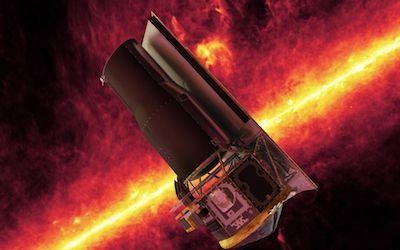Tue, Nov 07, 2017
Posts Request For Information From Commercial Companies Interested In Operating The Spacecraft
NASA's Science Mission Directorate (SMD) is seeking information from parties who are interested in operating the Spitzer Space Telescope using non-NASA funding, including defining and executing a Spitzer science program, beyond the timeframe of the NASA-funded mission.

According to a Request for Information (RFI) posted to the GSA website, the Astrophysics Division of SMD has committed support for Spitzer operations through March 2019. If no engineering impediments arise, the agency estimates that current Spitzer operations could continue through September 2019 and operations beyond September 2020 should be possible for the lowest data volume observing modes. The FY18 cost of Spitzer operations, without direct science data analysis funding for the Guest Observer (GO) program and Deep Space Network (DSN) support, is $14 million. Responses to this Request for Information are sought from all interested domestic parties.
The Spitzer Space Telescope was launched in 2003 as NASA's Great Observatory for infrared exploration of the Universe, and the prime mission was completed in mid-2009 after the exhaustion of the on-board cryogen. Since that time the observatory has operated with the two shortest wavelength arrays of the Infrared Array Camera (IRAC) at 3.6 and 4.5 µm. IRAC performance continues to be excellent. As Spitzer progresses along its Earth trailing orbit the geometry between the observatory, the Sun, and the Earth changes in such a way that in order to point the body-fixed high-gain antenna for communications, the observatory has to orient to greater solar pitch angles. Ensuring safe and efficient operations under these conditions poses the main challenge to prolonged operations.
While the upcoming James Webb Space Telescope's capabilities will exceed Spitzer's for most observing programs, Spitzer's demonstrated relative photometry precision, mapping speed and ability to make very long observations, interrupted only by downlinks every 24-48 hours, still provide unique capabilities for studies of exoplanets, extragalactic surveys and other science programs that benefit from its unique attributes.
However, the agency points out that an RFI is NOT a Request for Proposal, nor Invitation for Bid. This RFI is being used to obtain information for planning purposes only, and the Government does not intend to award a contract at this time.
(Source: GSA website. Image from file)
More News
Also: Outlaw Prop 4 Mooney, Ready 4 Duty, Ukrainian F-16 Pilot Lost, Blue Origin Flt On his journey to become the first pilot to land solo on all seven continents, 19-year-old Etha>[...]
Also: DarkAero Update, Electric Aircraft Symposium, Updated Instructor Guide, OSH Homebuilts Celebrate The long-awaited Sonex High Wing prototype has flown... the Sonex gang tells >[...]
Discrete Code As used in the Air Traffic Control Radar Beacon System (ATCRBS), any one of the 4096 selectable Mode 3/A aircraft transponder codes except those ending in zero zero; >[...]
From 2023 (YouTube Edition): Deviation from the Historical Mean Racine, Wisconsin-based DeltaHawk is a privately-held manufacturer of reciprocating engines for aircraft and hybrid >[...]
Aero Linx: Formation and Safety Team (F.A.S.T.), USA The Formation and Safety Team (FAST) is a worldwide, educational organization dedicated to teaching safe formation flying in Wa>[...]
 Airborne 07.02.25: TikToker Arrested, Vietnam A/L Ground Hit, ATC Modernization
Airborne 07.02.25: TikToker Arrested, Vietnam A/L Ground Hit, ATC Modernization Airborne Affordable Flyers 07.03.25: Sonex HW, BlackShape Gabriel, PRA Fly-In 25
Airborne Affordable Flyers 07.03.25: Sonex HW, BlackShape Gabriel, PRA Fly-In 25 ANN's Daily Aero-Term (07.07.25): Discrete Code
ANN's Daily Aero-Term (07.07.25): Discrete Code Classic Aero-TV: DeltaHawk Aero Engine Defies Convention
Classic Aero-TV: DeltaHawk Aero Engine Defies Convention ANN's Daily Aero-Linx (07.07.25)
ANN's Daily Aero-Linx (07.07.25)



